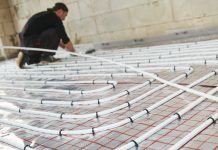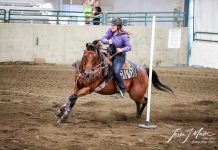Since 1954, the 3/10-mile dirt oval of Skagit Speedway has hosted countless racers and those who love to watch them turn laps. The Speedway emerged amid a national and statewide boom in racetracks in the years after World War II, as 1950s prosperity led to growing interest in hot rods and auto racing. For the track’s original stakeholders, the idea to build the speedway did not materialize from a mysterious voice emanating out of a cornfield; it came from a desire to establish a safe and fun racing community close to home.
Nearly 70 years later, it’s clear they more than succeeded in that goal.
Rough and Tumble Beginnings
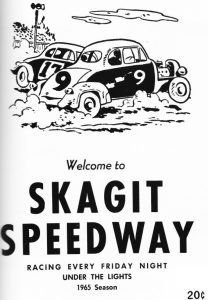
In the late 1940s, Western Washington racers had a number of different places they could haul their race cars – cheaper, older cars modified into race-ready shape and commonly called jalopies.
On July 27, 1949, one of Skagit County’s first formal jalopy races took place in downtown Anacortes as part of the city’s Marineers’ Pageant. Several of the drivers involved, including trophy dash winner Jim Raper, would help found Skagit Speedway just five years later.
Other races were held at horse tracks in Ferndale, Point Roberts and Bayview, near the Sedro-Woolley rodeo grounds, and even a pasture in Concrete. According to a 50th anniversary Skagit Speedway publication from 2004, the pasture could be tremendously unpleasant: on one particular race day, all-night rains and the last-minute removal of cows left cars and drivers covered in more than just mud.
In these early days, safety often took a backseat to fun. At the Point Roberts horse track, dust became so heavy during a race that Jim Raper drove off the track and into a horse barn. At Ferndale’s Pioneer Park track, racers Art Hilstead and Ted Decker once locked bumpers and impacted a rail circling the inside of the track. The rail went through Decker’s radiator, took the skin off his arm, and continued through Hilstead’s car.
Eventually, 14 men—Hilstead, Raper, Decker, Floyd Grace, Harley and Glen Sutt, Bill Woodruff, Harry Weatherby, Jerry McAdow, Dick Woodring, Don Latting, Bud Schaimshen, and Elbert Lemley—banded together in 1954. Using their own money, they purchased roughly 15 acres of land just off U.S. Highway 99, seven miles north of Burlington.
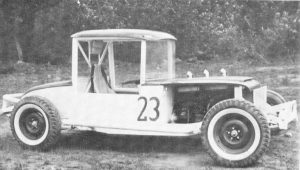
With help from many volunteers who wanted to race at and patronize the future track, work began. It was not easy. Stumps—some of which were old growth up to 12 feet in diameter—were dug out of the earth. Some had to be dynamited to be removed. Land at the track’s eventual south end was also about 12 feet higher than the north, requiring dirt to be transferred to even out the property.
Despite the immense work required, Skagit Speedway held its first race on Labor Day weekend. The track’s first iteration, by today’s standards, was wildly unsafe: there were no walls between the track surface and spectators, the flagman stood on the track, and some drivers used bailing wire as seat belts.
Facilities were also primitive: the first concession stand was a three-burner Coleman camp stove for coffee and hot dogs, there was no grandstand seating, and restrooms were simply two wooden planks with blankets draped over them.
Racing Evolution
In 1956, the Skagit Hardtop Racing Association was founded to establish racing and safety rules at the track, the same year wells were dug to supply the track with fresh, on-site water for its track surface.

In 1961, Skagit added lights for night racing and changed race times from Sunday afternoons to Friday nights. As the years continued, track management made improvements for both fans and drivers, improving comfort and safety.
The racing itself also changed. Jalopies gave way to semi-modifieds – cheap open-wheel cars running carbureted engines, which evolved into fuel-injected super-modifieds in the early 1970s. Street stocks—essentially stripped-down street-legal cars—debuted in 1966 and evolved into late models by the 1990s.
From super-modifieds came winged sprint cars, the track’s primary category of racing to this day. In the early ’70s, the track began racing on Saturday nights, a tradition that continues today. The track’s biggest event, the Dirt Cup, began in 1972. Originally held on three dirt tracks in Western Washington over three nights, the event became exclusive to Skagit Speedway in 1978, the same year the World of Outlaws sprint car series first visited.
Dirt Cup, now named in honor of former track promoter Jim Raper, attracts the West Coast’s top sprint car drivers and has among the track’s biggest paydays. Next year, it will celebrate its 50th running.
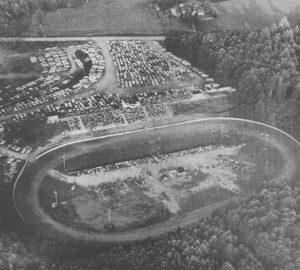
The World of Outlaws is the country’s premiere sprint car series. It returned to Skagit in 1979, from 1994 to 1996, and from 2005 to the present. The track has also hosted various special events over the years, including monster trucks.
Throughout the decades, many legendary drivers have raced at Skagit, including sprint car champs Steve Kinser, Sammy Swindell, Donny Schatz, and Jan Opperman. NASCAR drivers like Kasey Kahne and Tony Stewart have done battle at the track, as have female drivers like Debbie Kracke and Cheryl Glass, the latter of whom was a ground-breaking African-American driver.
To The Future
In August 2001, Skagit County native Steve Beitler, whose father and uncle competed in the track’s first race, became co-owner of Skagit Speedway. By 2004, he was sole owner.
Most of Beitler’s life has revolved around the track, from attending his first race at four months old to selling race programs at age 8. With the exception of his time in the late 1980s to mid-1990s as a professional sprint car driver, Skagit Speedway has been a true home.
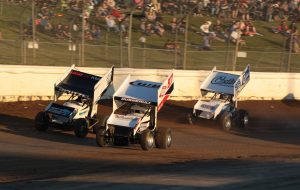
“There’s nothing more pleasurable than to watch somebody win their first race, or to look out in the grandstands and see all the moms and dads and children and grandparents and cousins – all these families – getting together for a fun night of entertainment,” Beitler says. “It’s nice to know that we provide a place that people can come and get away from their weekly grind, and sit back and relax.”
During Beitler’s reign as track owner, Skagit added over $1 million in improvements, including new scoreboards, lights, a sound system, crash barriers, fire-fighting equipment, bathrooms, and remodeled concessions. Six years ago, the track changed its track surface to improve dust issues.
Today, the facility is capable of hosting up to 12,000 people, and fans range from octogenarians to infants. In addition to being an entertainment venue, the track has also sponsored hundreds of youth, school and nonprofit entities across Northwest Washington.
Although Beitler sold the racetrack to a new ownership group in August 2021, he’s confident the new group will keep Skagit Speedway healthy and racing well into the future.
Looking back on the track’s humble beginnings, it’s hard not to be impressed by how long the dream of a few local racers has lasted.
“They didn’t know if it was going to last a year or two,” Beitler says. “They had no idea. There were so many race tracks in the Northwest at that time. And one by one, all the rest went away, and Skagit continued growing and getting bigger and better.”

